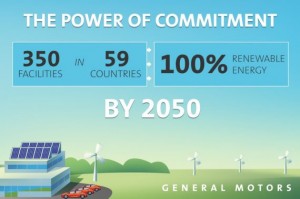The Fortune 500 Nears the Tipping Point
 A report by World Wildlife Foundation, Ceres, Calvert Research & Management, and CDP (formerly the Carbon Disclosure Project) shows that nearly half of all Fortune 500 companies are setting renewable energy targets. The analysis finds that 48% of Fortune 500 companies now have targets in place for renewable energy procurement, carbon pollution reductions, and/or energy efficiency.
A report by World Wildlife Foundation, Ceres, Calvert Research & Management, and CDP (formerly the Carbon Disclosure Project) shows that nearly half of all Fortune 500 companies are setting renewable energy targets. The analysis finds that 48% of Fortune 500 companies now have targets in place for renewable energy procurement, carbon pollution reductions, and/or energy efficiency.Fortune 500 companies like General Motors, Facebook, TheHome Depot, and now Apple are investing in renewables. Thereport documents 53 Fortune 500 companies that have set renewable energy procurement goals; 23 of those companies have set 100% renewable energy targets. The majority of the100% club set this goal in the past three years.
Many companies have relied on purchases of wind to move toward their targets. More than 6,700 MW of wind has been procured by corporate and non-utility purchasers. According to wind energy sources, “With costs falling by two-thirds over thepast seven years and more than 18,700 MW of wind power capacity coming online in the near term, wind power stands ready to meet growing corporate demand.”
